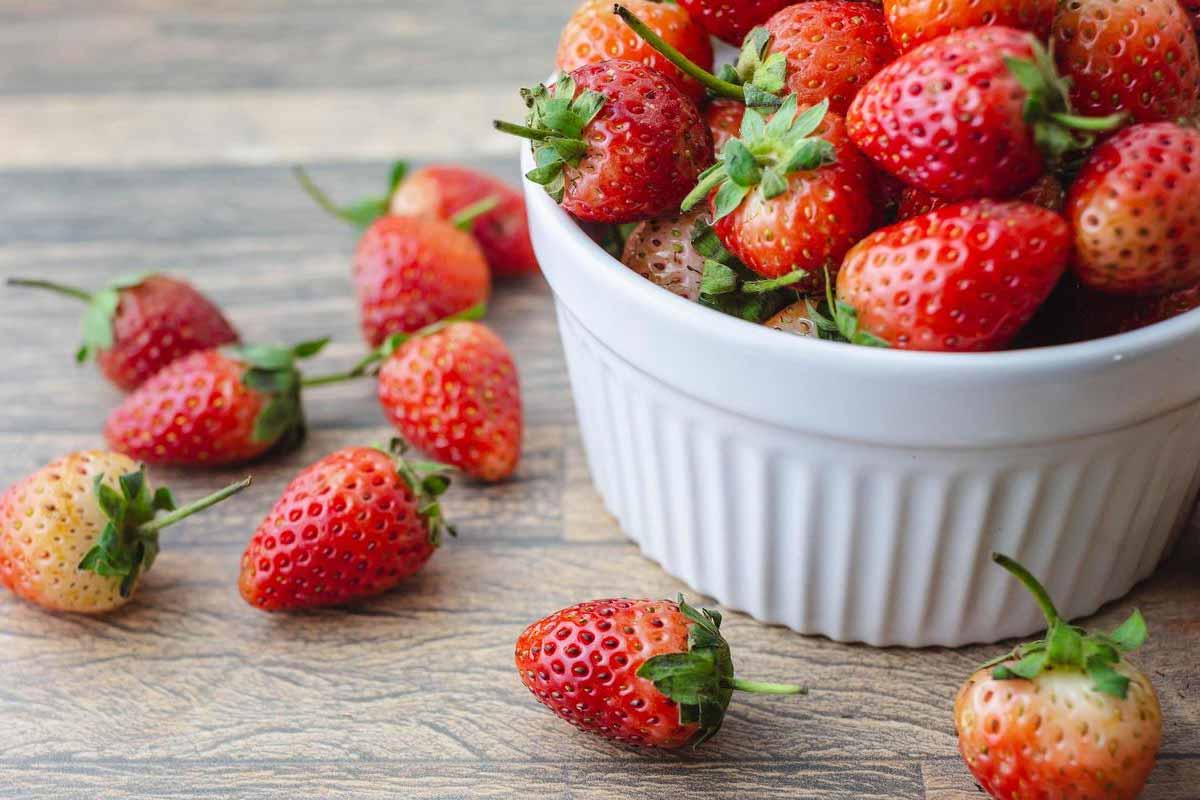They look perfect, then turn soft before the week ends. The fix begins long before you reach the kitchen. Smart choices, gentle handling, and a breathable home make all the difference for strawberries. Skip harsh cold and stuffy bowls. Favor cool shade, steady airflow, and dry surfaces. Small habits, used together, keep flavor bright, texture bouncy, and color vivid without complicated gear or wasted fruit.
Choose well from punnet to pantry
Pick with intention, then give the berries a friendly landing spot. Color tells the truth, so seek uniform red and lively green caps. Avoid pale tips, bruises, or leaks. Packaging matters because air keeps moisture in check. Vented cardboard or wood helps; sealed plastic often traps dampness.
Handle with care right after buying, as gentle moves prevent bruises that invite mold. Carry the punnet on top of your bag, never under bread or milk. At home, tip berries into a shallow, clean container. Spread them in one relaxed layer so they can breathe.
Line that container with fresh paper towels, then add a second sheet if you must stack. Leave caps on until serving because they shield the fruit’s crown. Wait to rinse until just before eating. One small change, applied early, protects strawberries for days.
Why strawberries hate soggy air and sealed lids
Cold flattens their aroma while warm rooms speed decay, so neither extreme helps. Fridge chill near the back often turns textures mealy. The fruit bowl on a sunny counter concentrates heat and humidity. A middle path works best: a cool, dark shelf with consistent airflow and low moisture.
Moisture control drives longevity because water on skins fuels mold. Paper towels absorb tiny droplets, and space between berries limits spread if one fails. A lid that isn’t airtight, or a cover with a few pinholes, balances protection and ventilation while keeping fruit safe from knocks.
When life gets busy, and cooling space is your only option, use the front of the fridge where it’s slightly warmer. Keep the container shallow and vented. Plan to eat within one or two days, then refresh the paper towel if it feels damp. This routine steadies strawberries beautifully.
Moisture, movement, and daily checks
Think of water as seasoning, not storage. A brief rinse in diluted vinegar helps knock back surface microbes, then thorough drying keeps skins calm. Spread berries on a clean cloth, pat gently, and let air finish the job. Any leftover dampness shortens time, so patience now pays later.
Gentle movement matters because bumps create soft spots. Slide the container rather than shake it. When packing lunches, cushion fruit with a dry napkin. Keep caps on until the last moment, then hull with a small knife to avoid tearing. Small habits work together, so freshness lasts longer.
Make a quick daily check part of your kitchen flow. Look for weeping juice, fuzzy patches, or a fermented smell. Remove a single offender fast, because one bad fruit can start a chain. With this minute-long ritual, you maximize flavor while keeping strawberries safe for the next snack.
The best place is cool, dry, and breathable for strawberries
A pantry shelf or cupboard away from heat sources creates steady conditions. Light stays low, air moves gently, and temperatures avoid harsh swings. The container’s paper towel bed soaks up whispers of moisture, while a loose cover blocks knocks and dust. Together, these points slow spoilage naturally.
Texture thanks you for this choice. Without deep chill, flesh keeps bounce and juice stays inside the cells. While rigid plastic fogs and drips, vented or perforated setups stay clearer. If you must stack, add a towel between layers, then rotate the top layer to the bottom the next day.
Time favors this setup as well. Expect a comfortable window to enjoy the fruit, especially when shopping smart and handling lightly. For special events, a quick honey-and-water dip forms a delicate film that holds sheen and delays weeping by a day or two. That sweet shield also flatters strawberries.
Serving, saving, and little upgrades
Plan uses as you shop so nothing lingers. Eat the softest fruit first, then keep the rest in your cool, ventilated container. Pair with yogurt, leafy salads, or pancakes, since acidity and fat carry flavor. A squeeze of lemon brightens sweetness while masking minor bruises without adding weight.
Transport with thought because travel hurts fruit. Keep punnets on top, never beneath heavy items. At home, avoid sunny windows and steamy stovetops. After rinsing, dry completely before plating. For parties, queue trays in a shaded spot, then bring them out last minute so condensation stays low.
When surplus arrives, act fast. Slice, then lay pieces on a lined tray to freeze before bagging. This keeps pieces separate and easy to pour. Blend straight from frozen for smoothies, sauces, or quick compotes. Even preserved, the memory of peak fruit remains, and planned use honors strawberries.
A simple routine that keeps berries bright and firm longer
Small, consistent steps protect taste and texture without gadgets or guesswork. Choose vivid fruit, give it a dry, ventilated bed, and stash it on a cool, dark shelf. Rinse only before eating, watch one minute a day, and respond fast to spoilage. With this rhythm, strawberries stay joyful longer.
